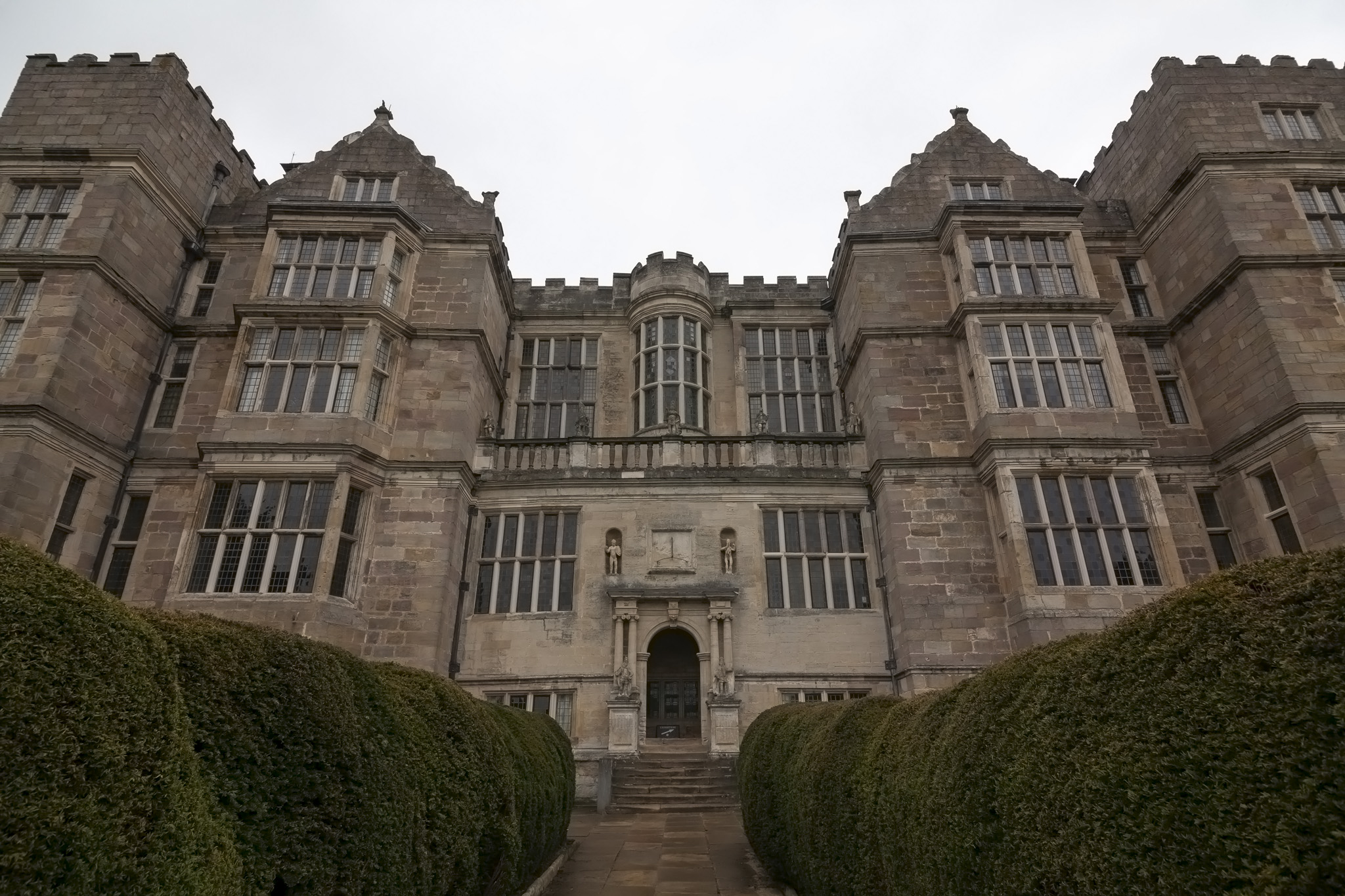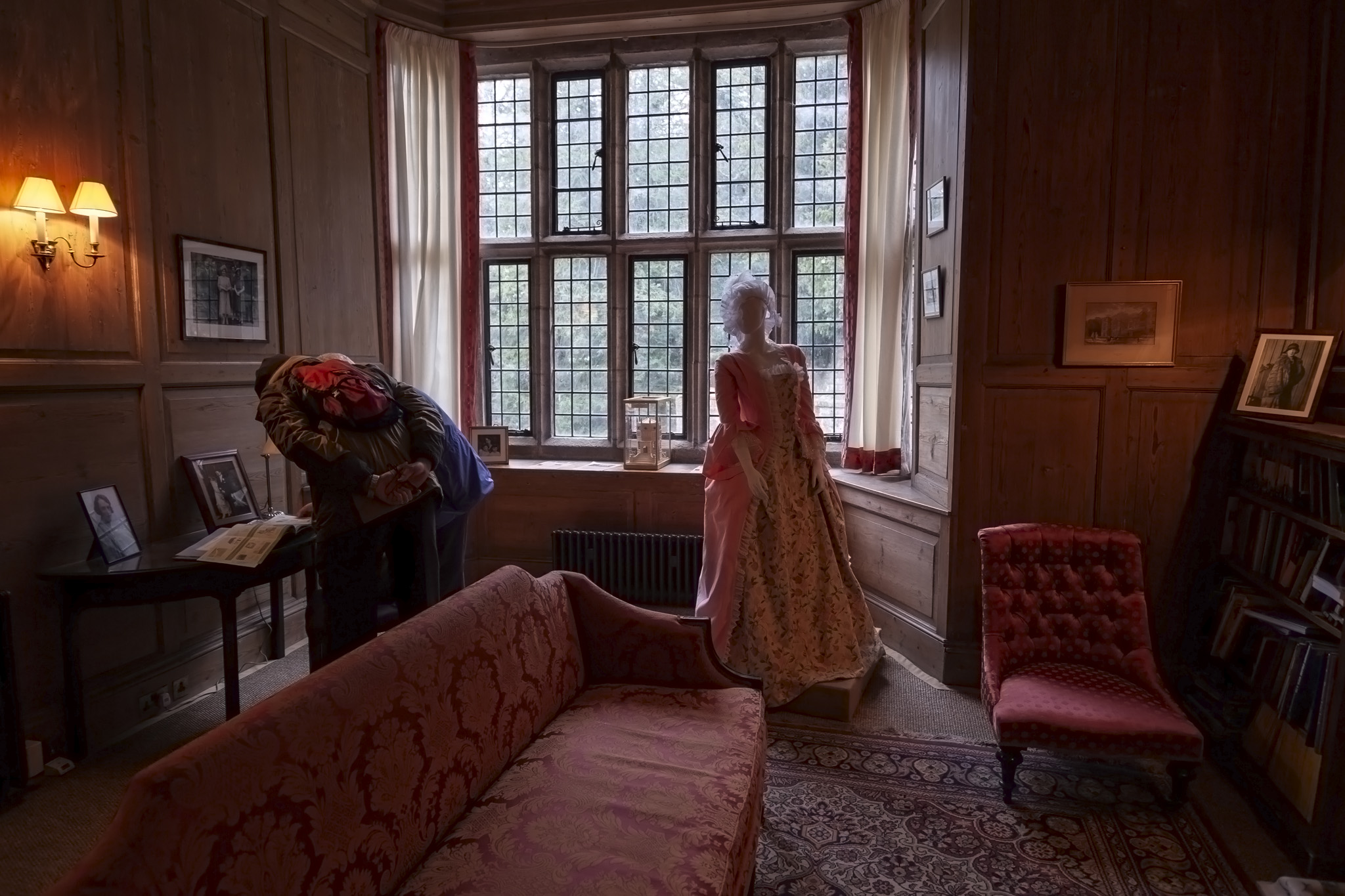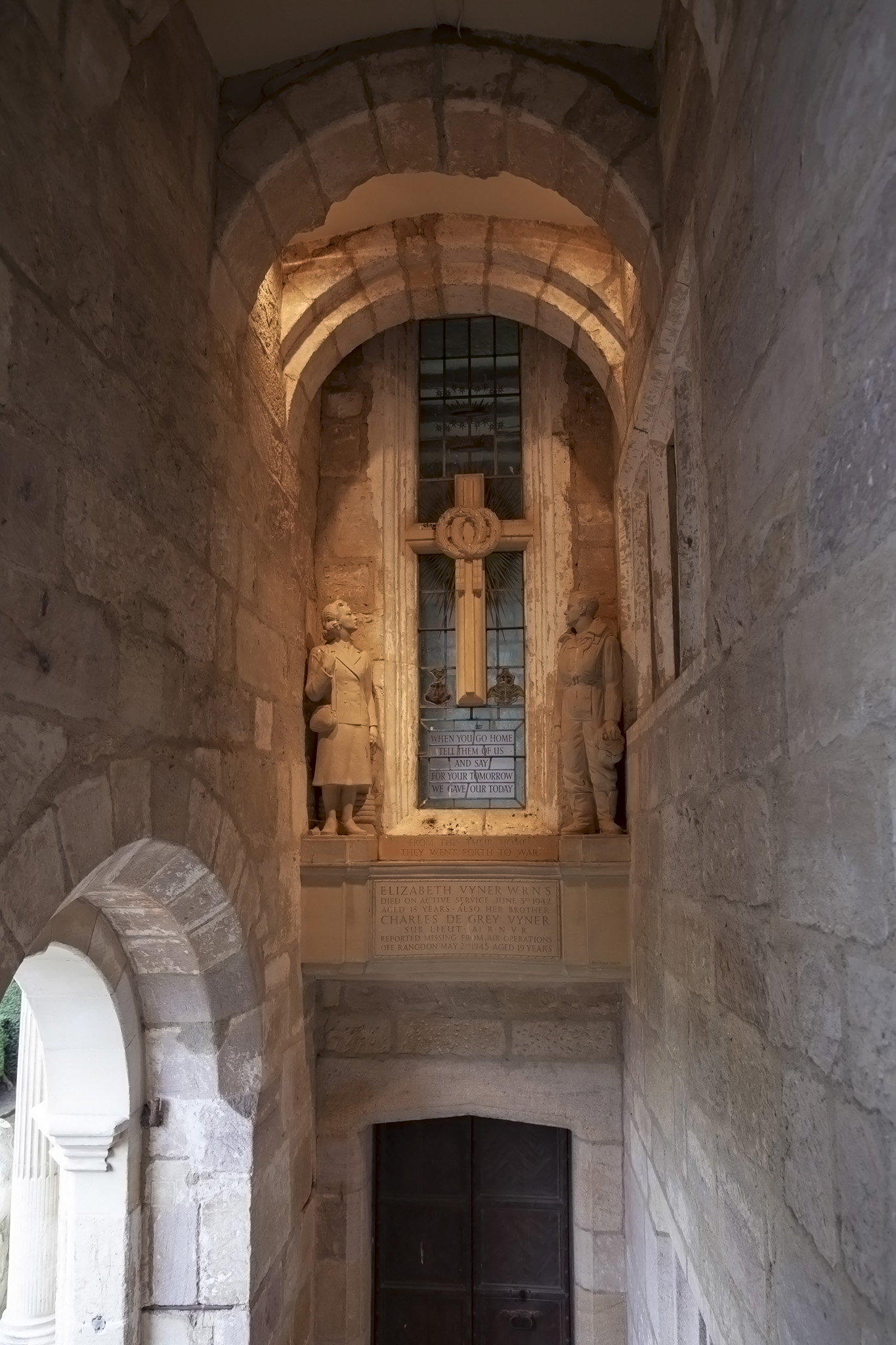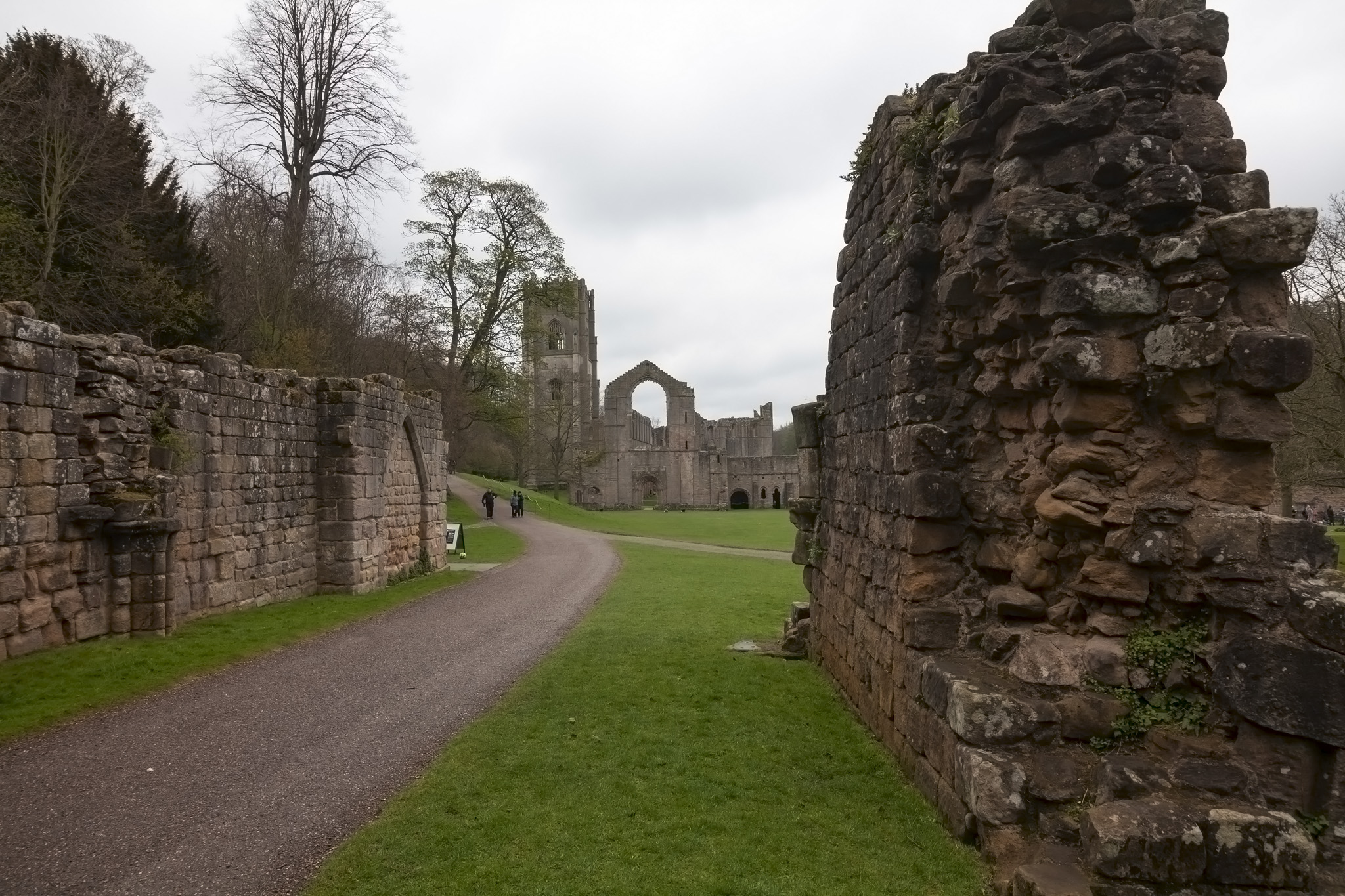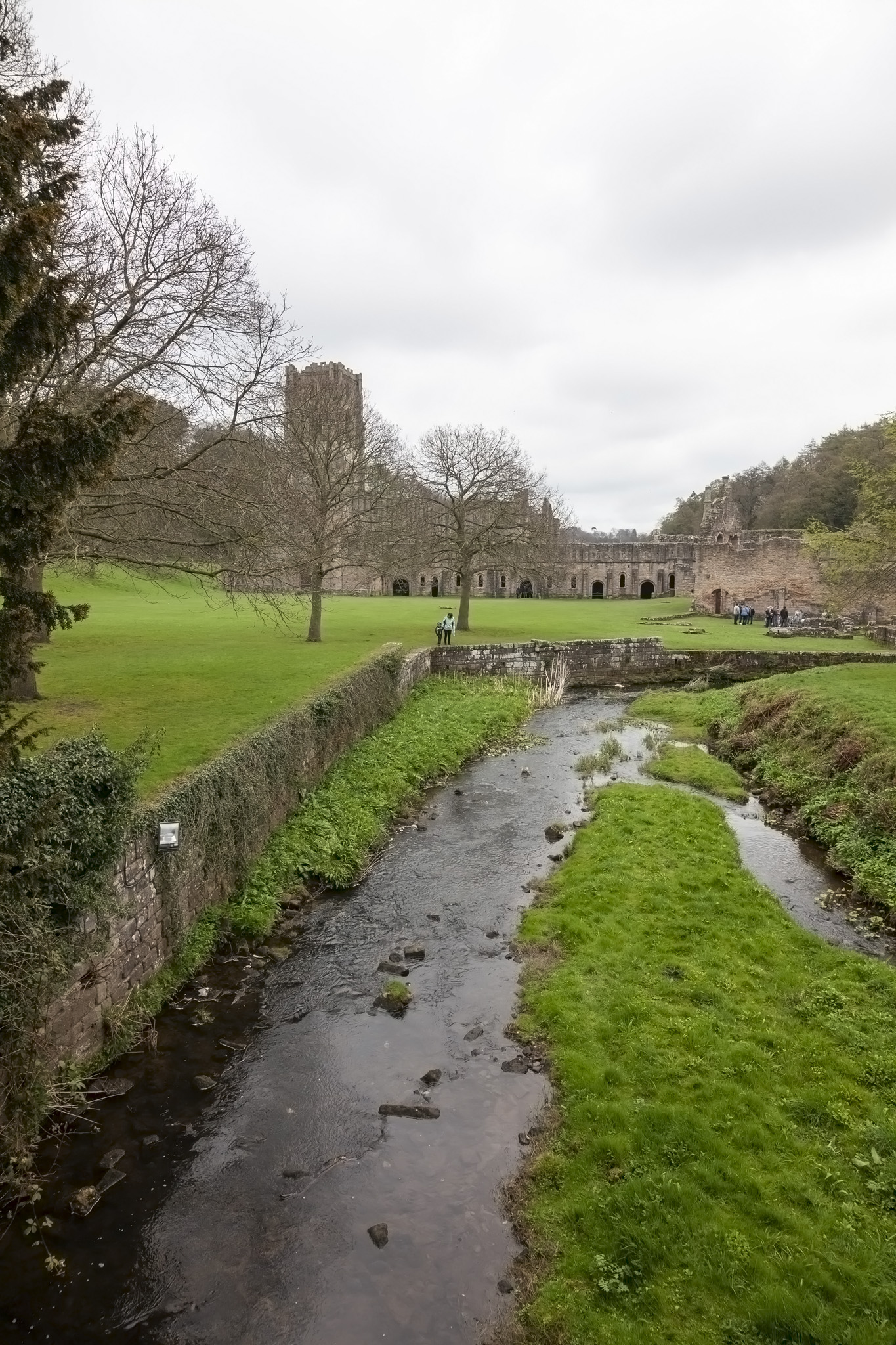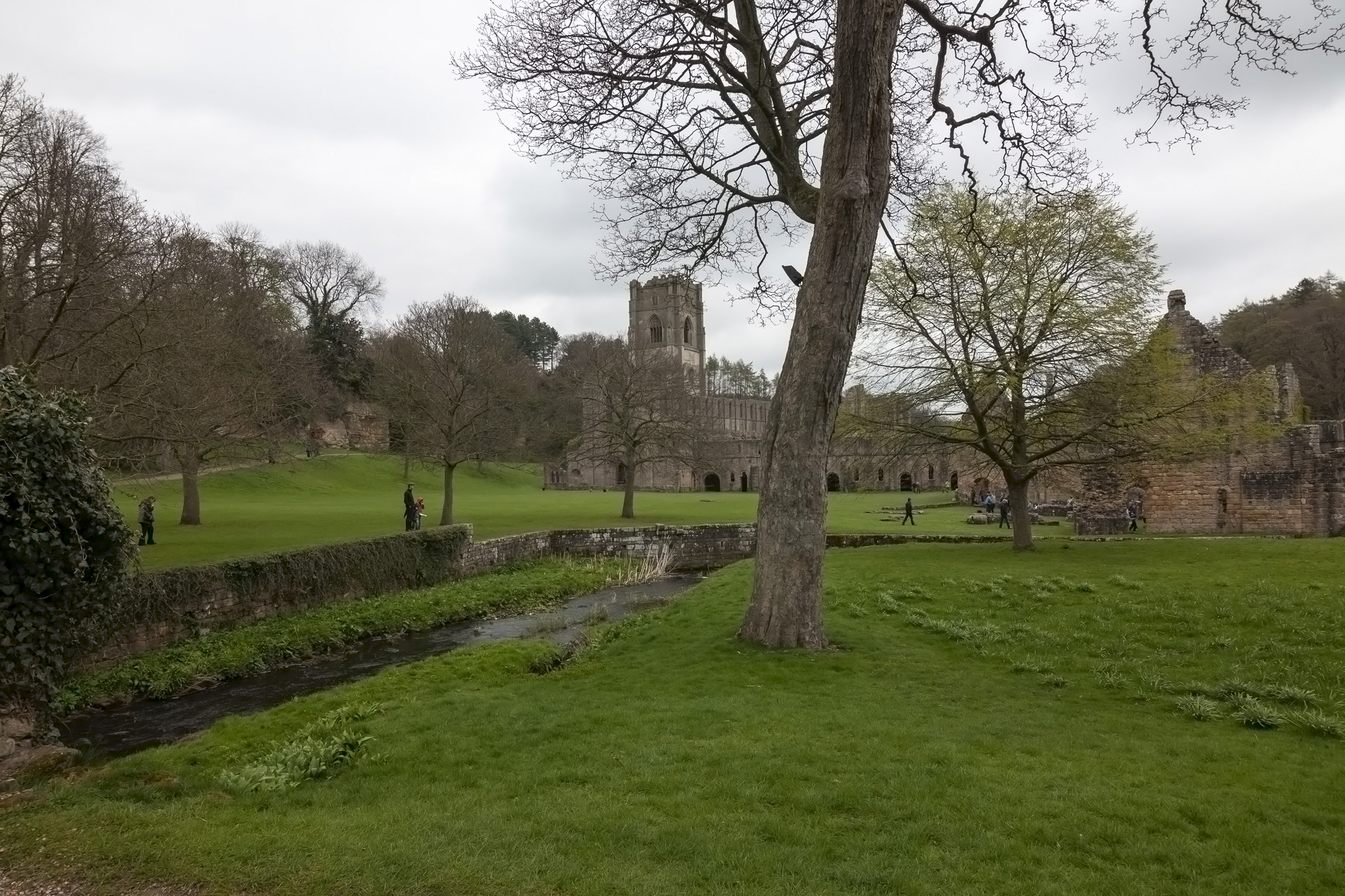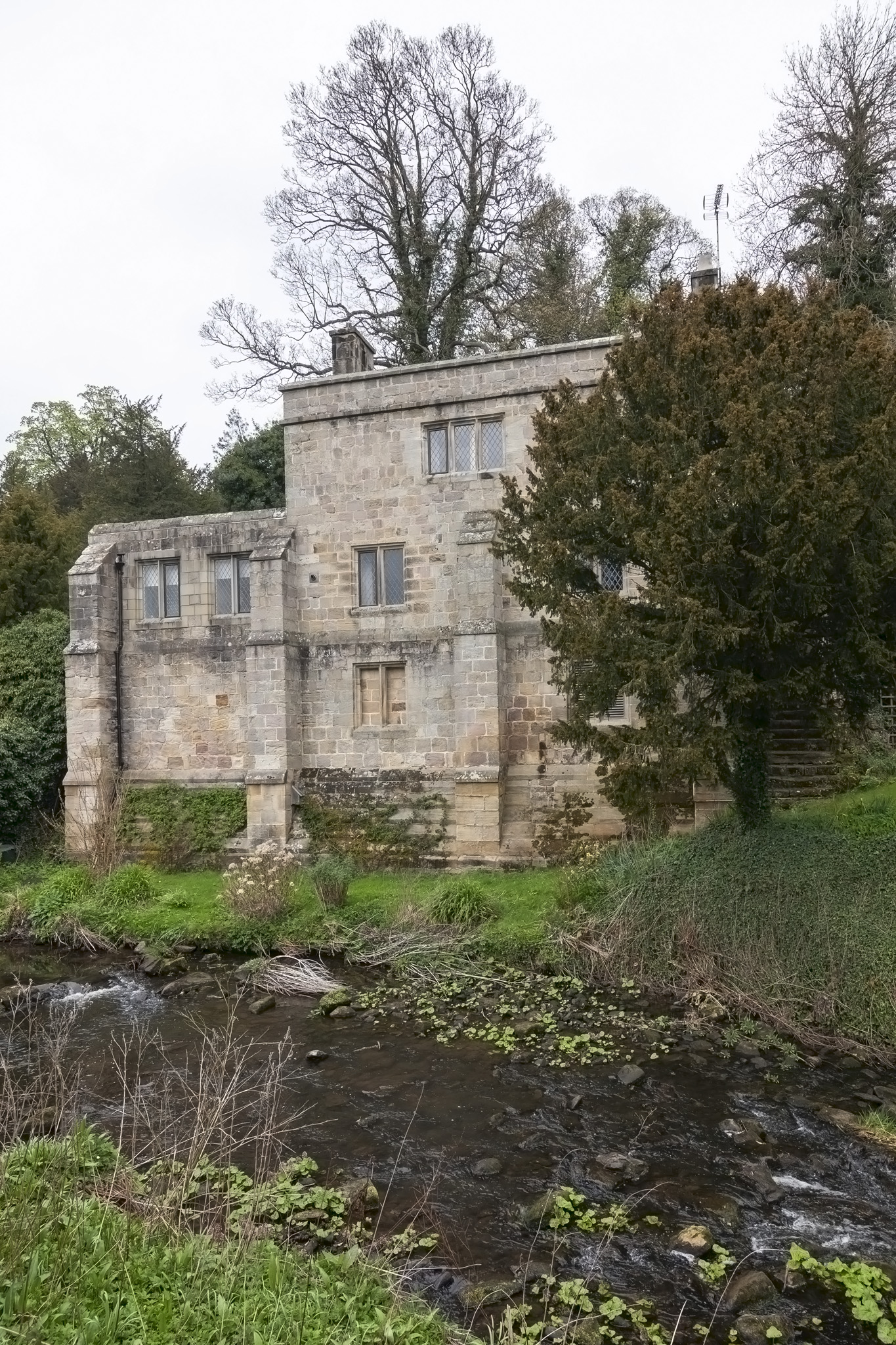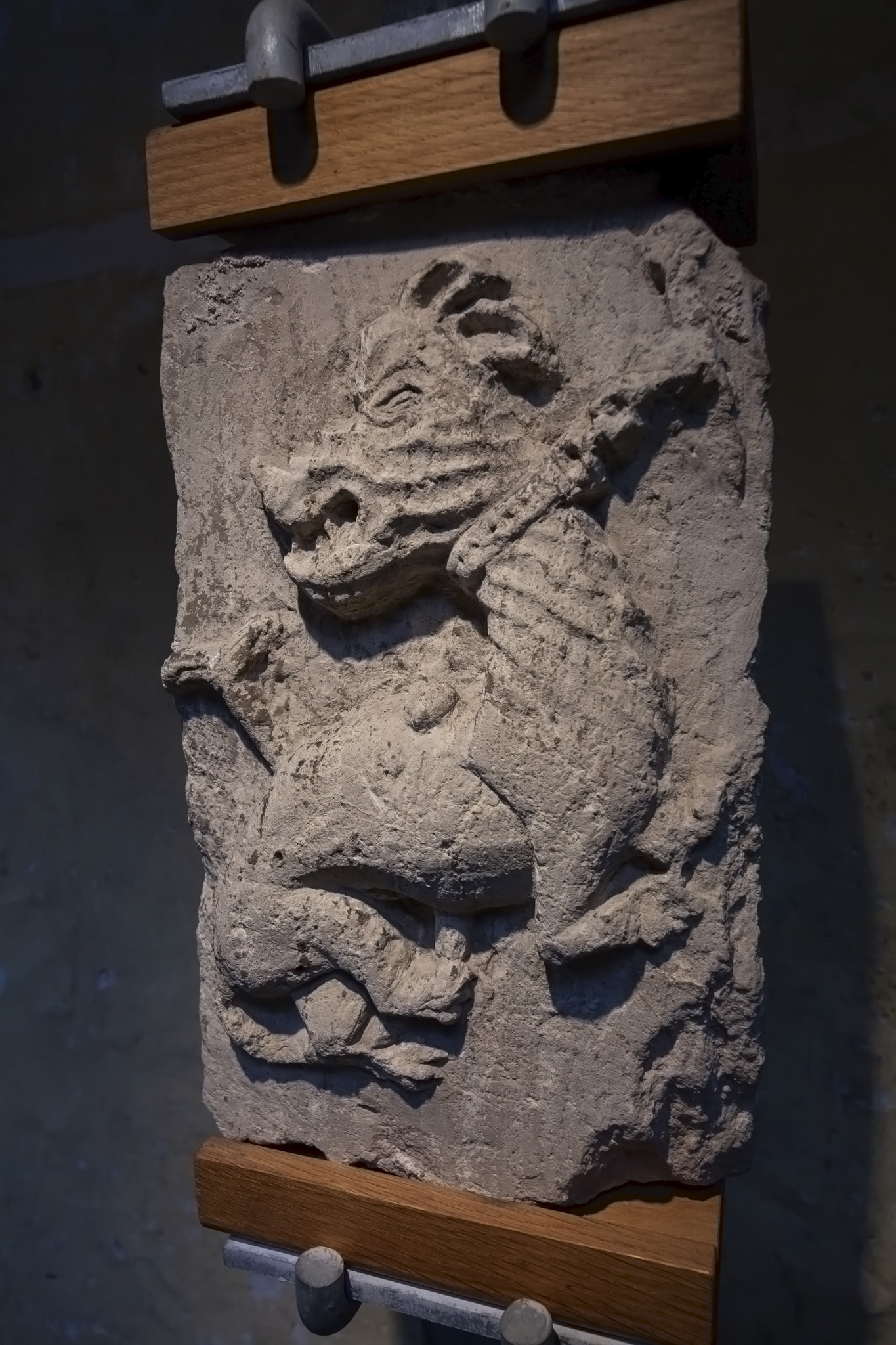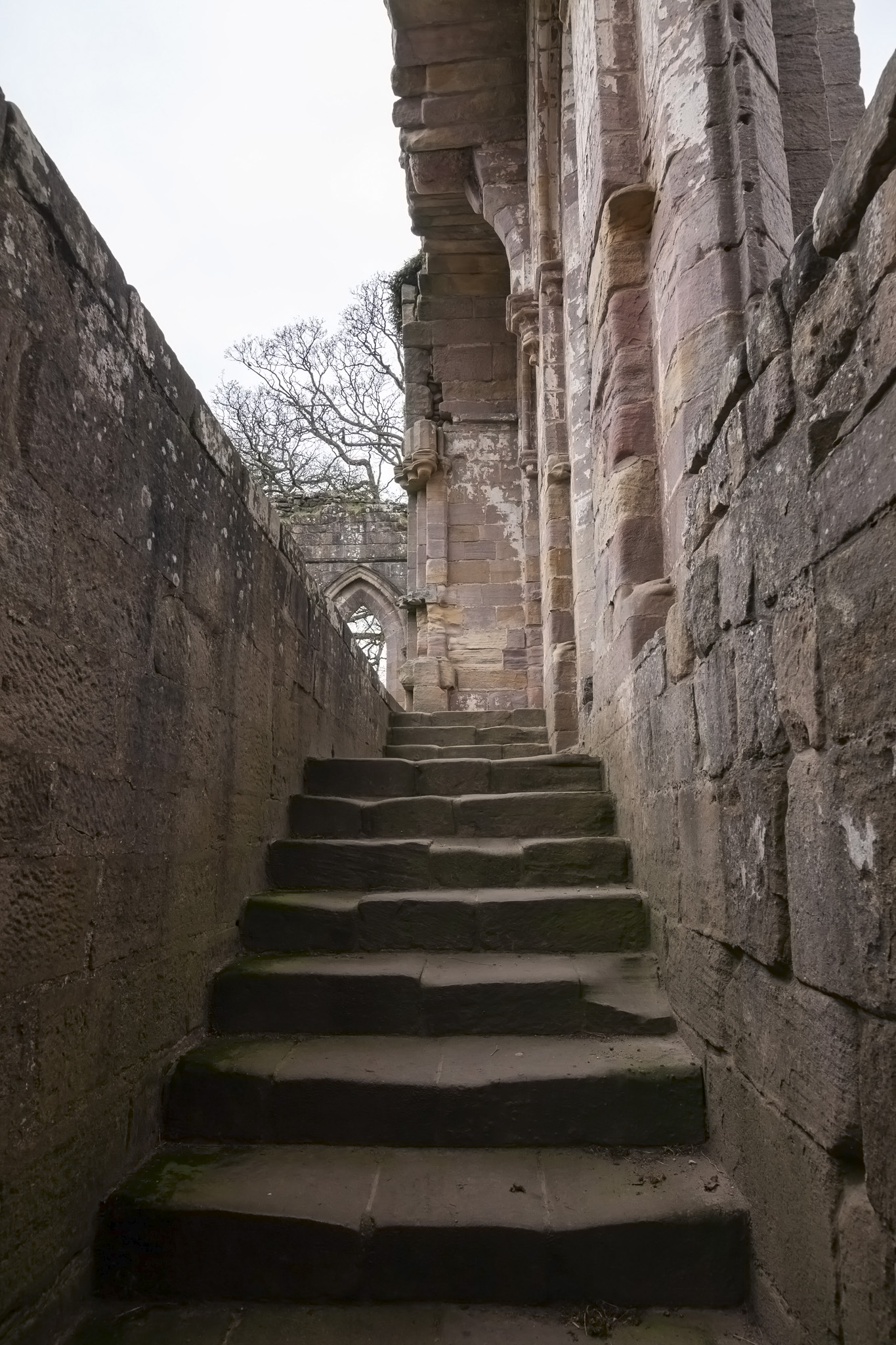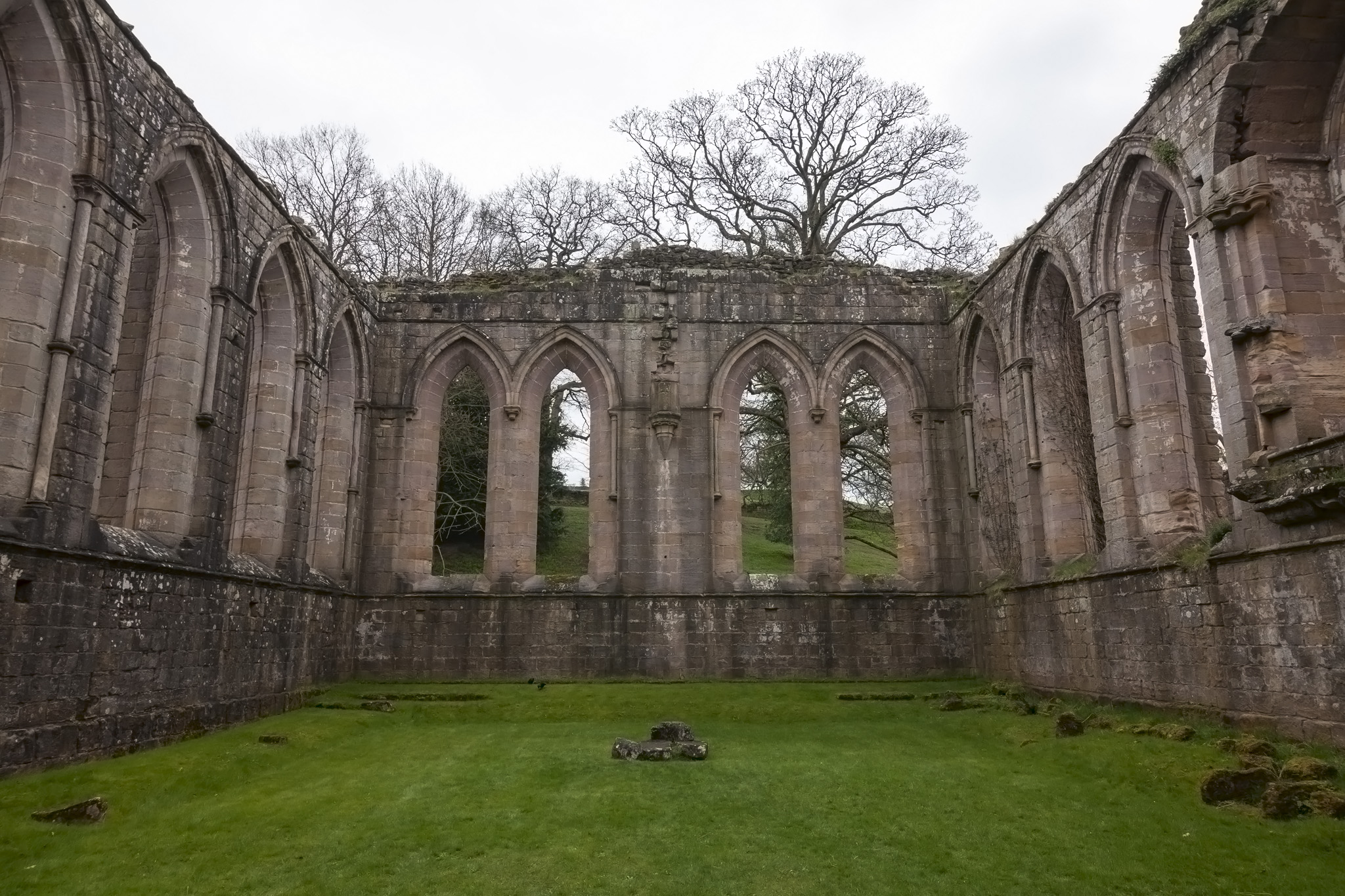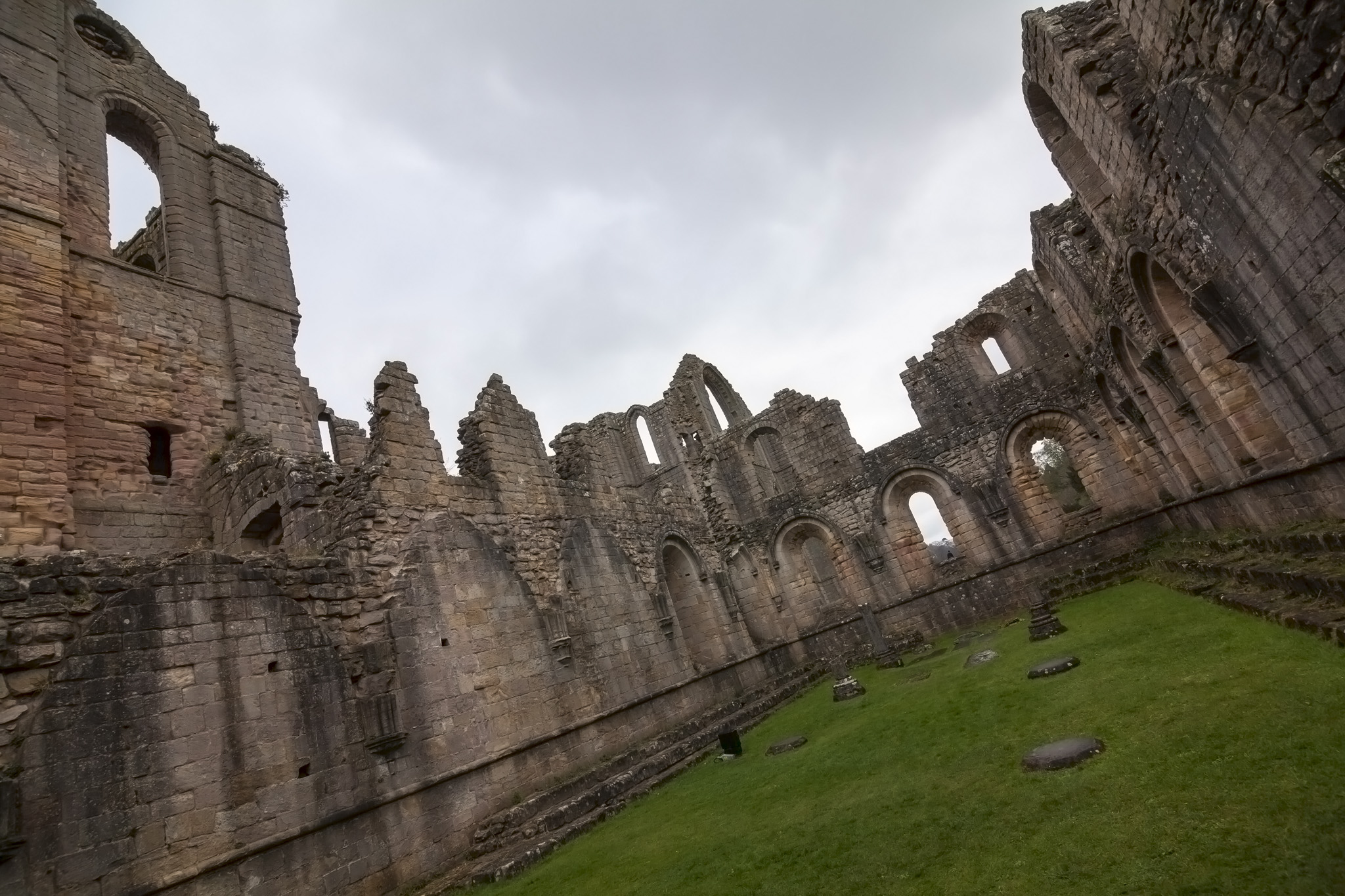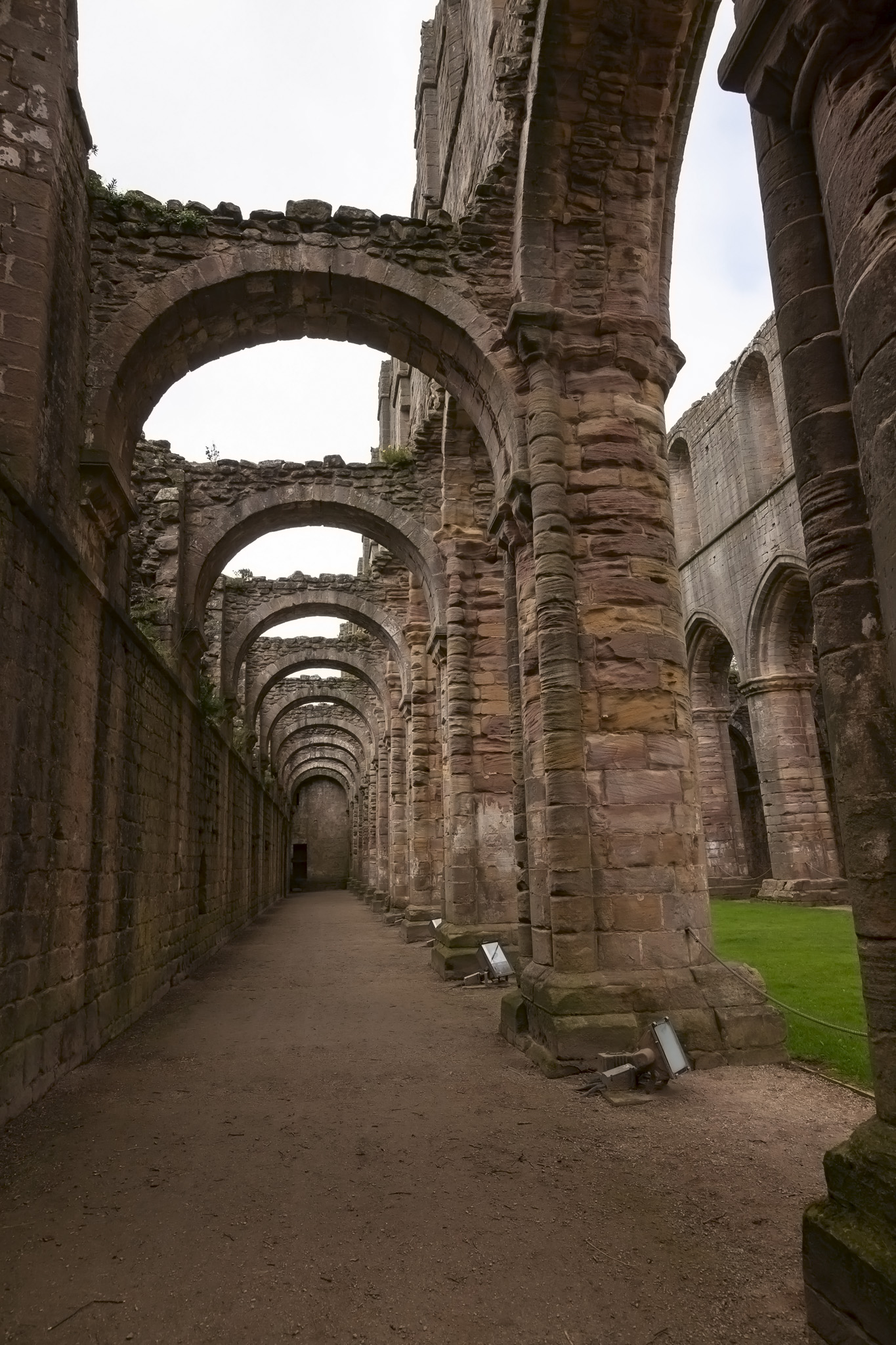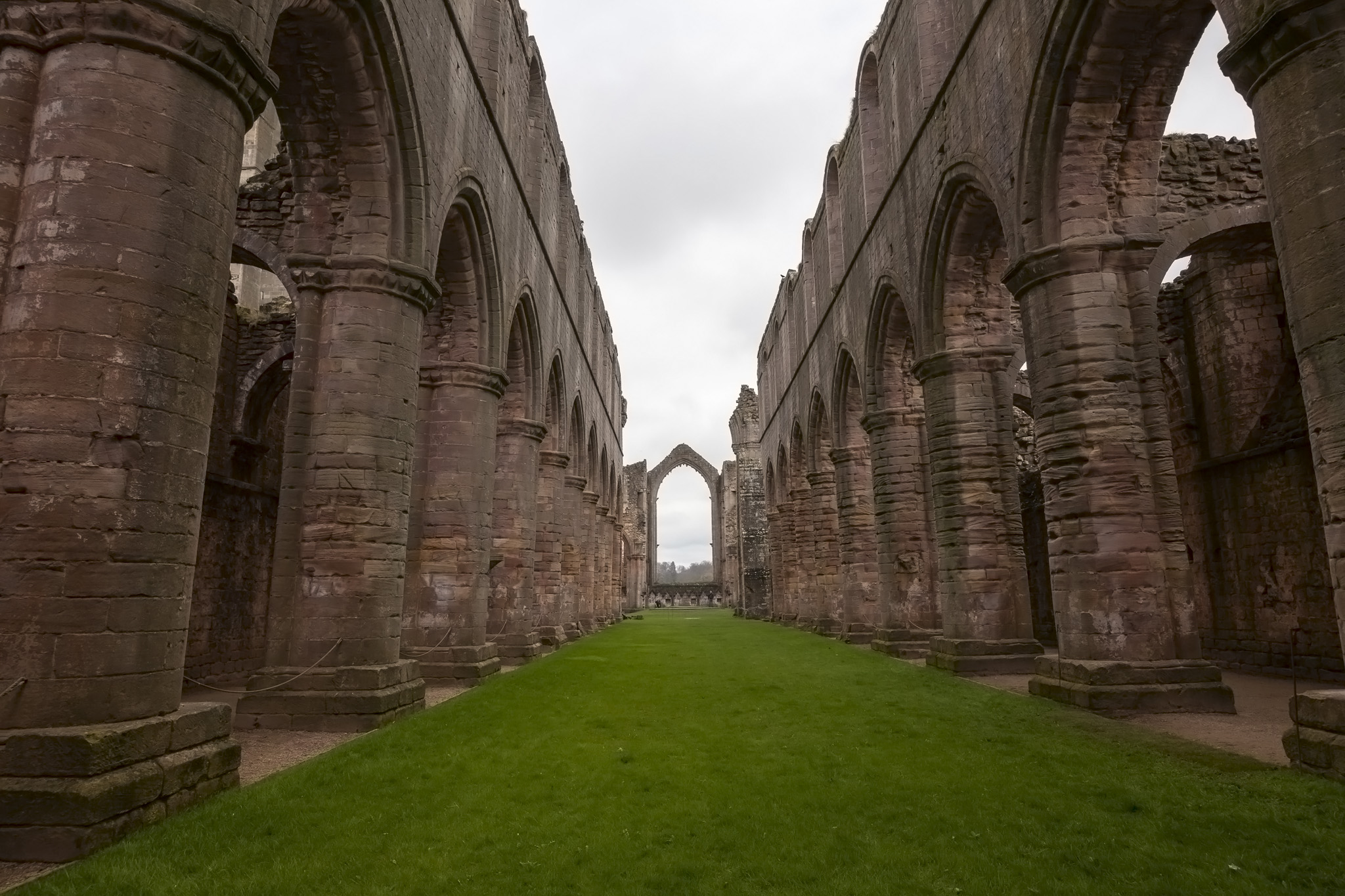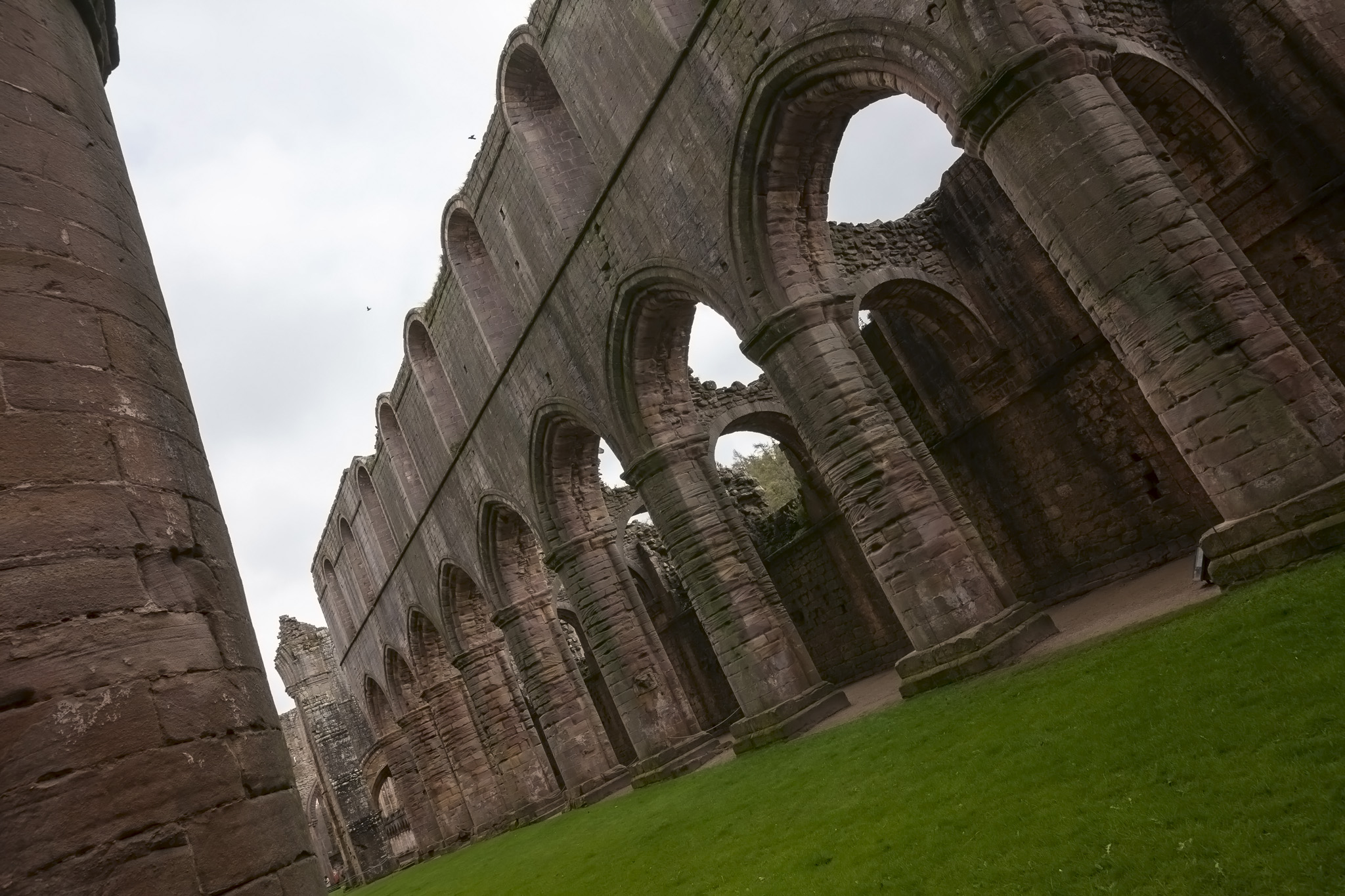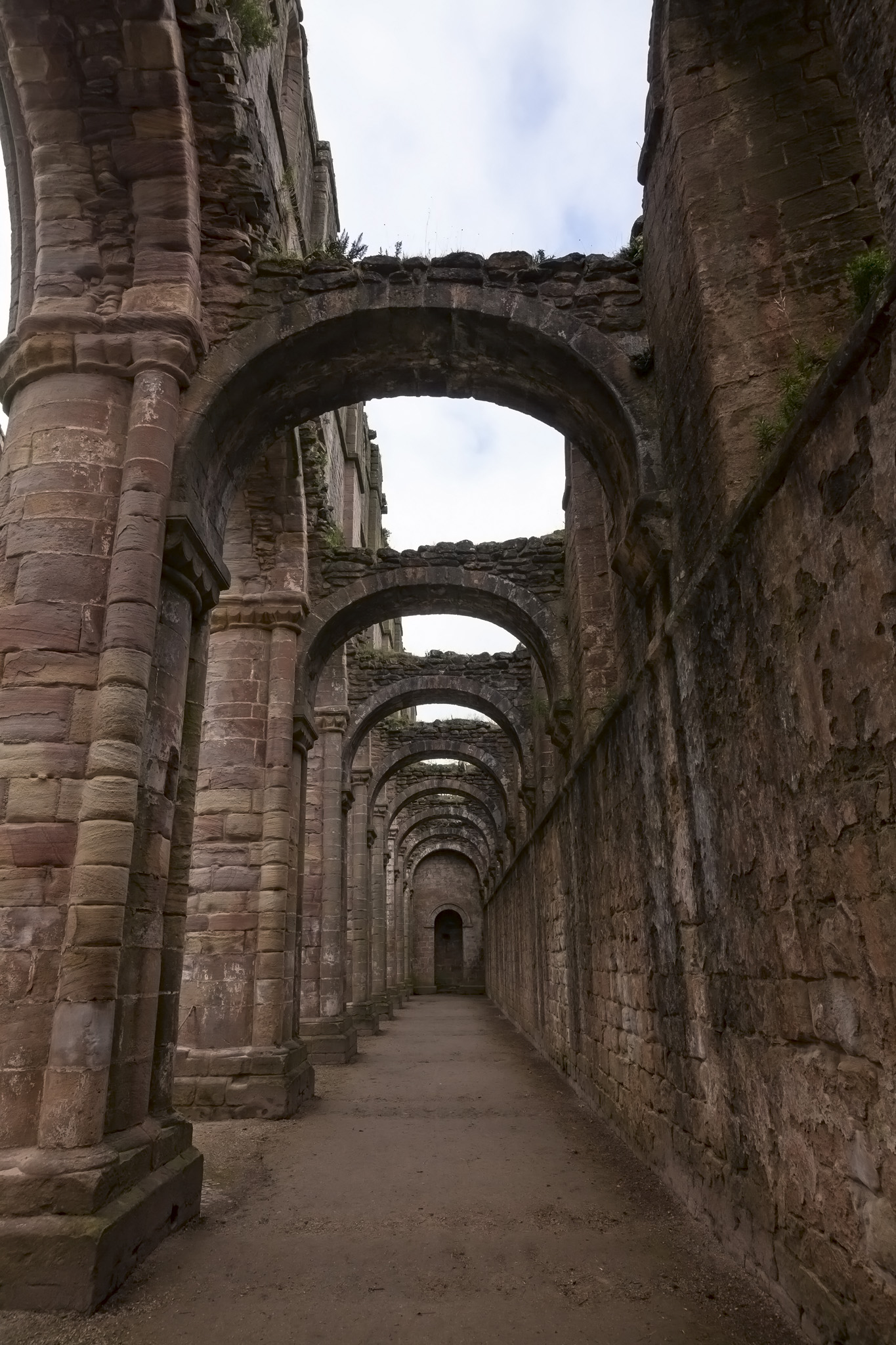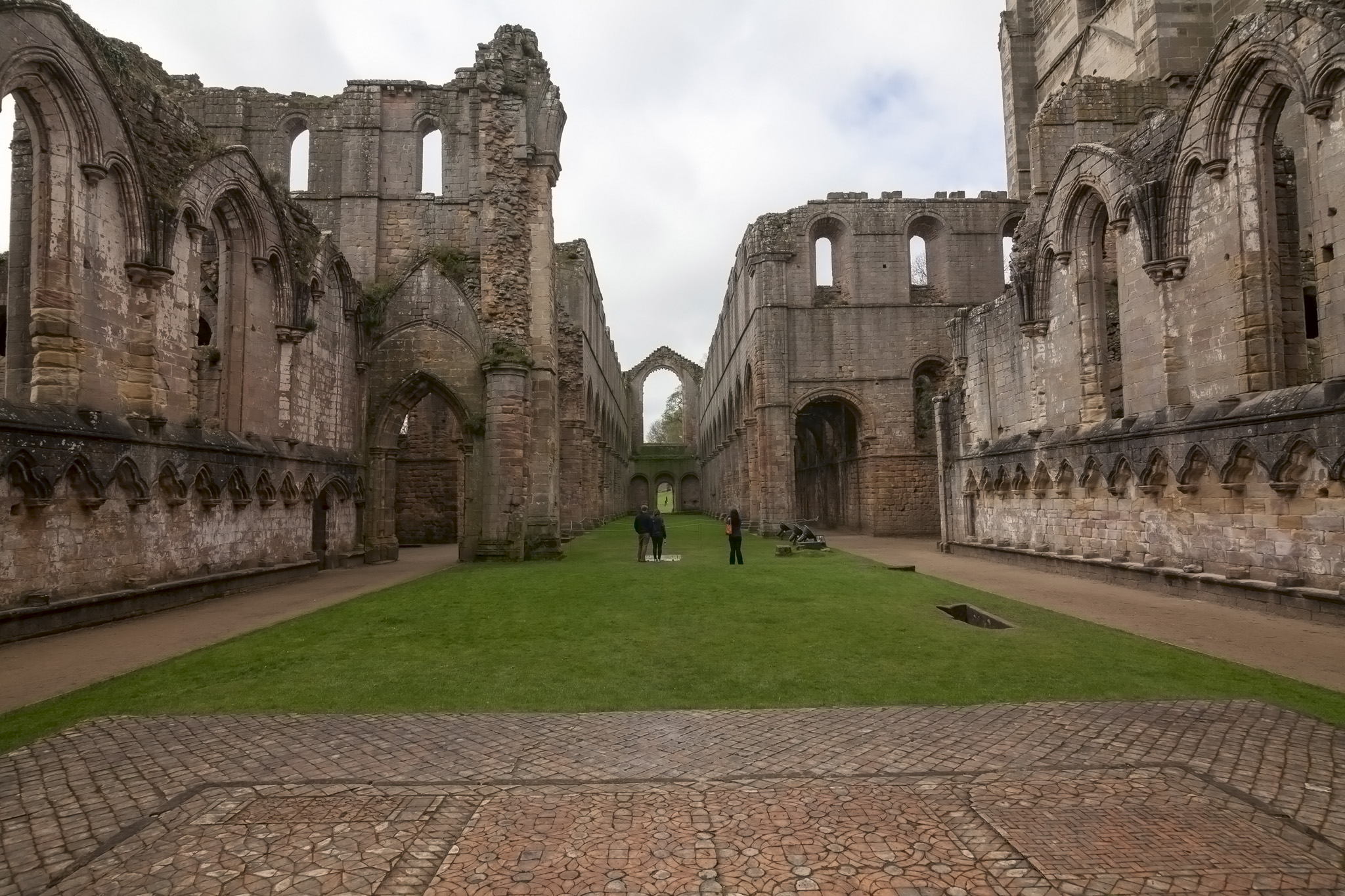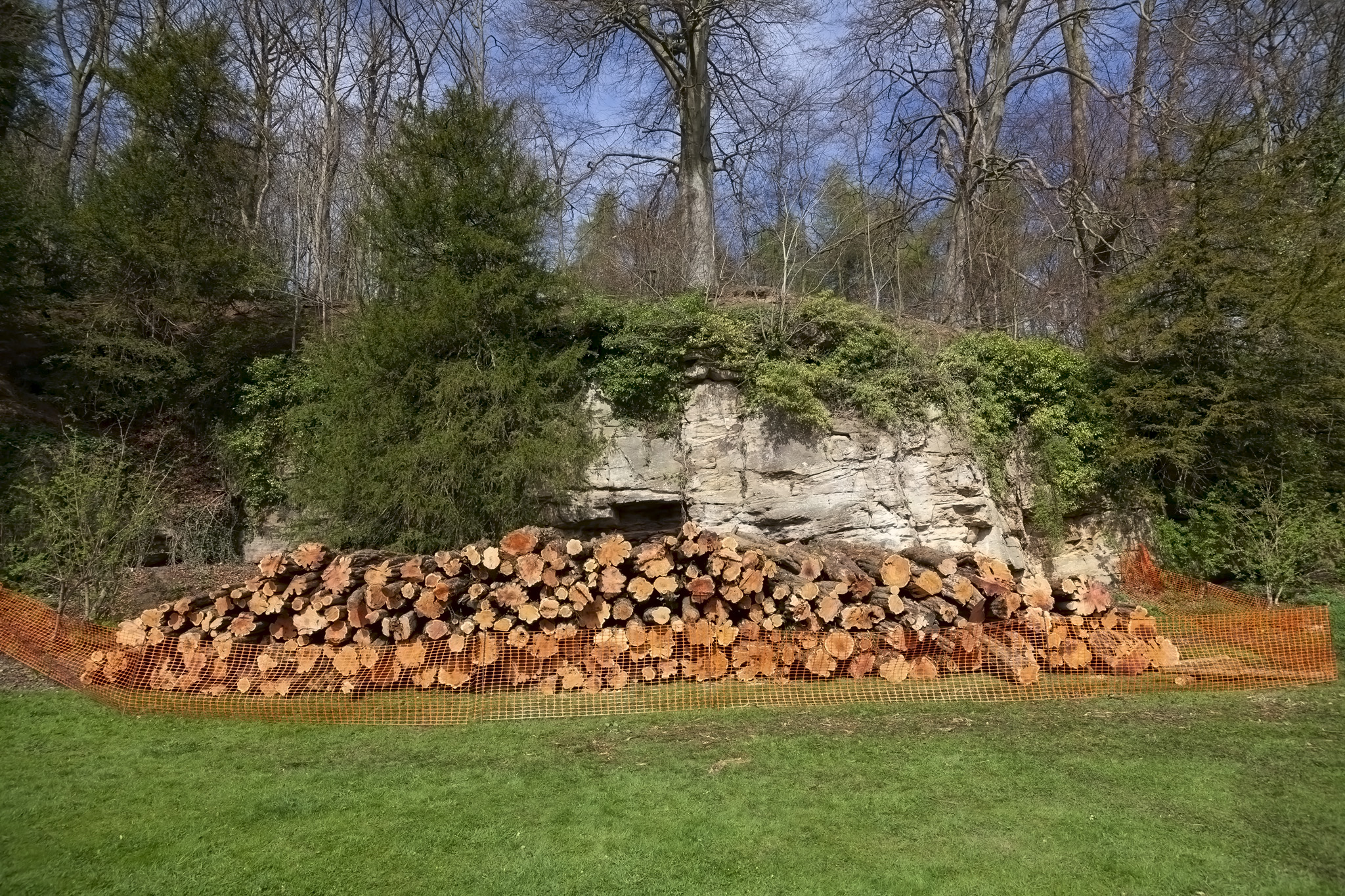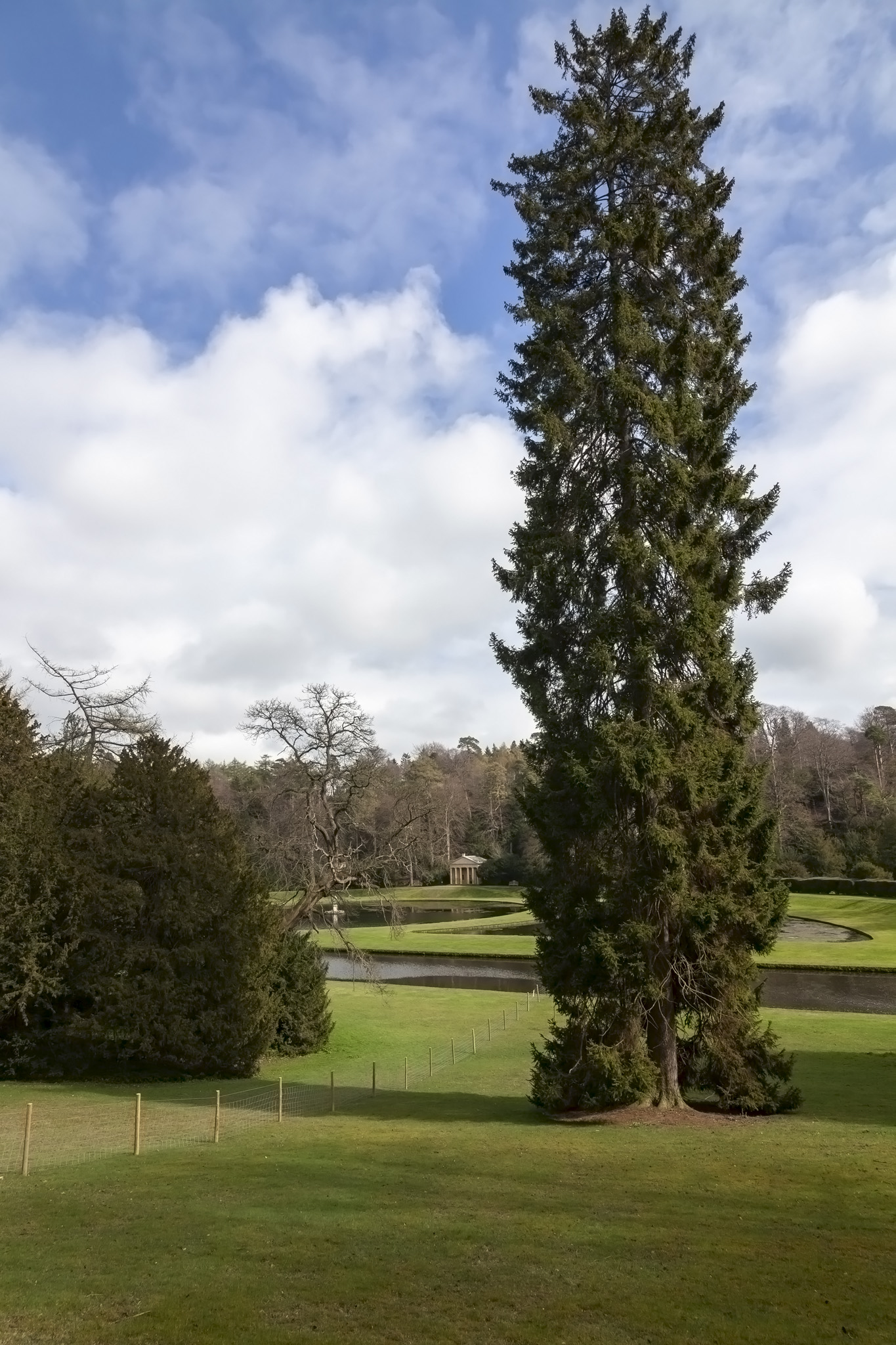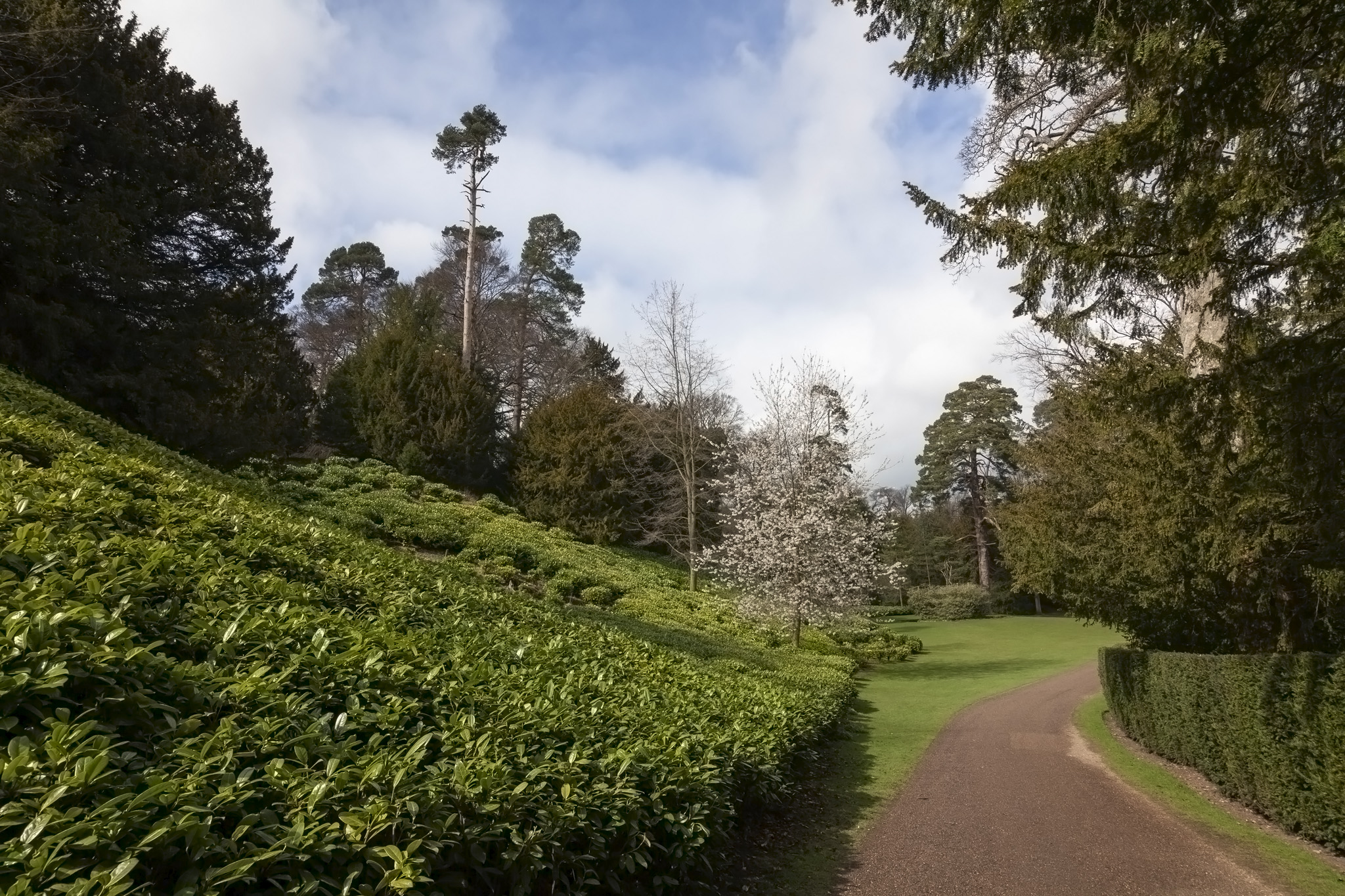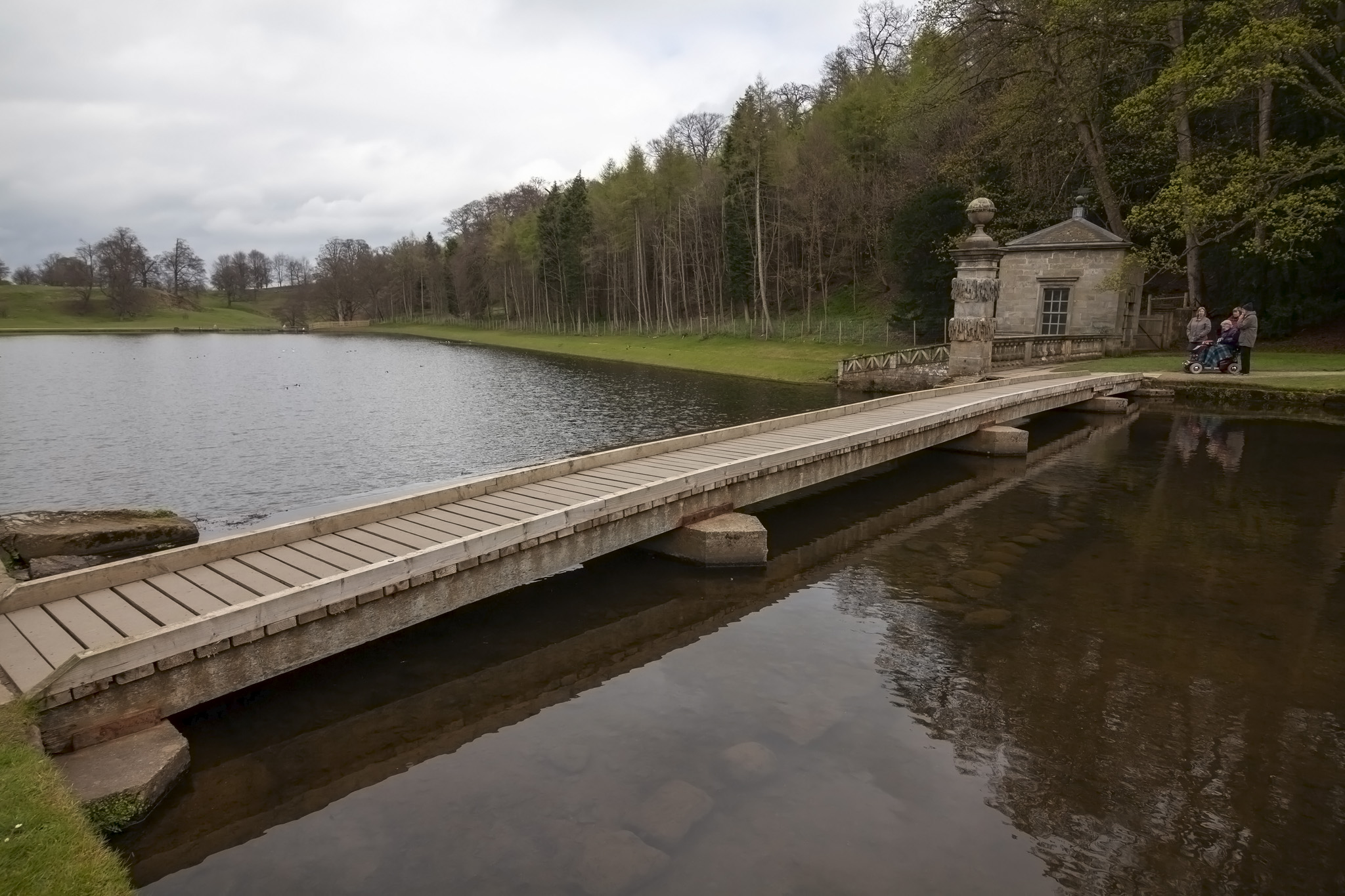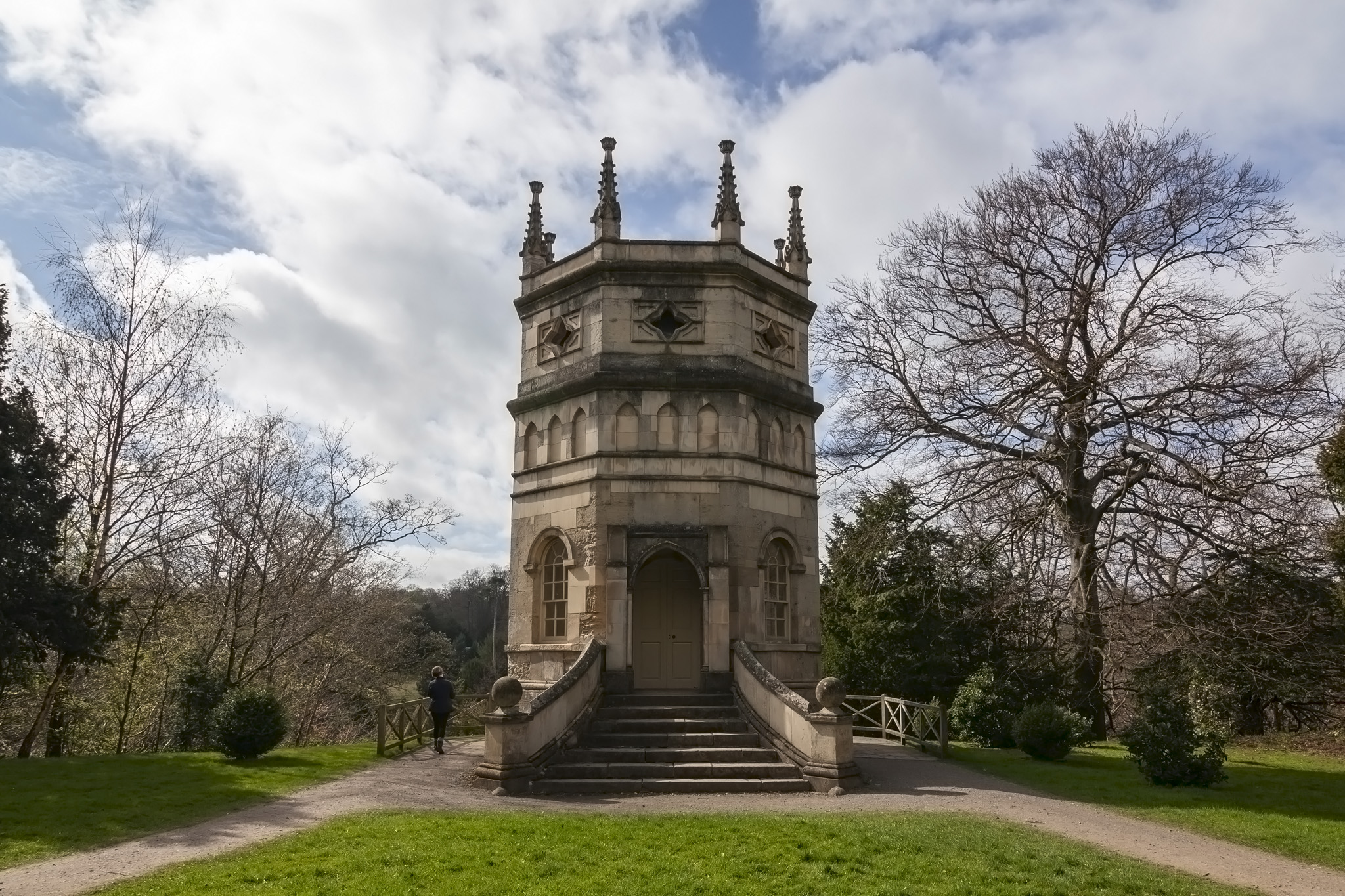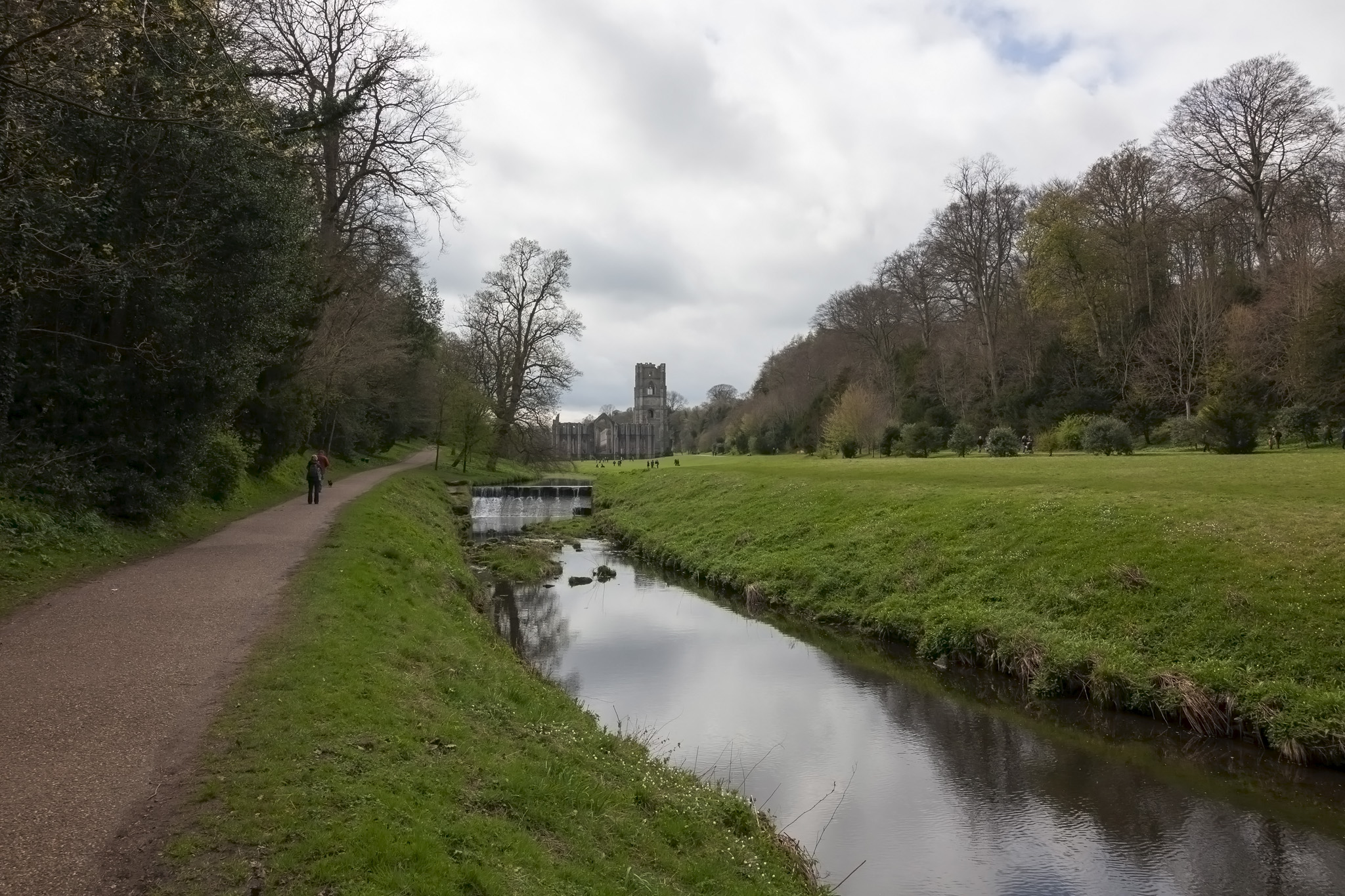We’re fairly regular visitors to Yorkshire on account of adopting a rugby league team from the area to support several years ago and deciding it would be nice to pop up and see a game once a season. We haven’t quite made it every year as our fixation with cruises has tended to eat up our annual vacation time and it’s quite a drive from the south coast but when we do visit the region we make sure to explore around it each time. In 2012 one of our day trips from where we were staying took us north towards Ripon, there to take a look around Fountains Abbey.
There were four good reasons to choose Fountains Abbey as a destination, those being its proximity to where we were staying, the fact it’s a National Trust property and we’re members, it’s an ancient ruin and we’re fond of them, and it – along with Studley Royal Park in the vicinity – is a UNESCO World Heritage Site and we love ticking them off the list.
The abbey and gardens are about ten minutes from the centre of Ripon by car, well sign-posted and easy to get to. As National Trust members we didn’t have to pay anything (the same is true for English Heritage members) but general admission adult prices are about £15 with children half that and family tickets available too. On the walk to the abbey itself we first came upon Fountains Hall, an early 17th century country house built from the stone of the abbey ruins. Its 20th century history is quite interesting with it undergoing some modernisation in the late 1920s and it housing guests such as the future King George VI and Queen Elizabeth, The Queen Mother, friends of the owners at that time, the Vyners. During World War II the building was co-opted to serve as housing for evacuees and was used as a sanitorium.
As you exit Fountains Hall there is a distinctive memorial window above a stone staircase leading down. Elizabeth and Charles were children of Commander Clare George Vyner and Lady Doris Hilda Vyner. The lower inscription reads:
Elizabeth Vyner WRNS [Women’s Royal Naval Service] Died on Active Service June 3rd 1942 Aged 18 years. Also her brother Charles De Grey Vyner Sub Lieut (A) RNVR [Royal Naval Volunteer Reserve] Reported missing from Air Operations Off Rangoon May 2nd 1945 Aged 19 Years.
From the hall we made our way the short distance towards the abbey ruins but decided to take a look around the small area of land to the west of it first which contained some streams with attractive, stone bridges crossing them and assorted buildings. Of odd interest was the Chinese-like dragon bas-relief we found at one of the buildings; the reason for its presence eludes me.
To Fountains Abbey itself now which was founded in 1132 on the back of a falling out in the Benedictine abbey located in York which led to 13 monks seeking to form a new abbey for themselves. After initially being granted land by the archbishop the monks sought to join the Cistercian order whereby they received instructions how to perform the various rituals specific to that Christian group as well as how to build religious buildings in accordance with Cistercian architectural practice, that being a more simple layout with no distracting features and very limited religious adornments. Originally built from wood, Fountains Abbey was soon replaced with stone from the region, some of it mandated following an attack on the building in 1146 by a group unhappy at the religious and political decisions of the abbot at the time.
After a few years of struggling Fountains Abbey attracted generous donations from wealthy benefactors partly on account of its good work for the poor in the area and it was able to buy additional land, set up granges, and employ labourers to work the more outlying areas that the brothers could not easily reach. The River Skell through the land made an ideal spot to set up a mill which could be used to mill the grain brought in from the granges. By the late 13th century Fountains Abbey had an efficient connection of estates under its ownership and was turning a handsome profit.
In the early 14th century a reduction in the number of labourers that could be employed, perhaps attributed to worsening relations with Scotland and Scottish raids as far south as York, led to a change in the way that Fountains Abbey was run as it could no longer adequately control farming. Laws that had prevented the leasing of religious property had been relaxed in the centuries before so the abbey started doing so with its more distant land and consolidating its nearer assets. By 1535 Fountains Abbey was the richest Cistercian monastery in England. Sadly for the monks, within four years they would surrender the abbey as part of Henry VIII‘s Dissolution Of The Monasteries. Some of the materials of the site – stone, timber, and lead – were sold by the new owner to offset his purchase of the land and Fountains Abbey began its decline into ruin.
The UNESCO World Heritage Site doesn’t just consist of the ruins, though. To the east and north of Fountains Abbey is Studley Royal Park which provides for a pleasant walk along the route of the River Skell. This area mainly consists of green lawns running alongside the river with paths that lead to it and also out to the deer park. Trees in the park include limes, oaks, and sweet chestnuts.
Studley Royal Water Garden was created by John Aislabie in 1718 who had inherited Studley Royal through his mother’s family. Aislabie had a passion for garden landscaping and set about introducing a natural look to the grounds of the estate as well as incorporating the water garden: an elegant series of canals, ponds, cascades, statues, and follies.
Aislabie was an interesting character who had been a notable MP, achieving such positions as Lord of the Admiralty, Treasurer of the Navy, and Chancellor of the Exchequer. It was in that lattermost role that he was partly responsible for the famous South Sea Bubble that eventually saw him resign, get expelled from the House, and spend some time imprisoned in the Tower of London for accepting money from the South Sea Company to push the bill through parliament. MPs getting imprisoned for taking money from private enterprises that screw over the country? Whoever thought such a thing was even possible? Good times, people, good times.
On the west side of the river through the park is a tearoom, ideally located for a break after exploring the abbey and wandering the park paths, where we enjoyed a drink and a cake which I’m sure was delicious but which I neglected to take a photo of. We then followed the riverside path back for some last views at Fountains Abbey before leaving.
Fountains Abbey and Studley Royal Park is just our sort of British historical site to explore; some old architecture, some lovely history, and beautiful views. You can easily spend several hours there and there were parts of the estate that we didn’t even touch on such as the church and the deer park. It’s definitely worth a visit and we’re probably overdue a return trip to the lovely location.

